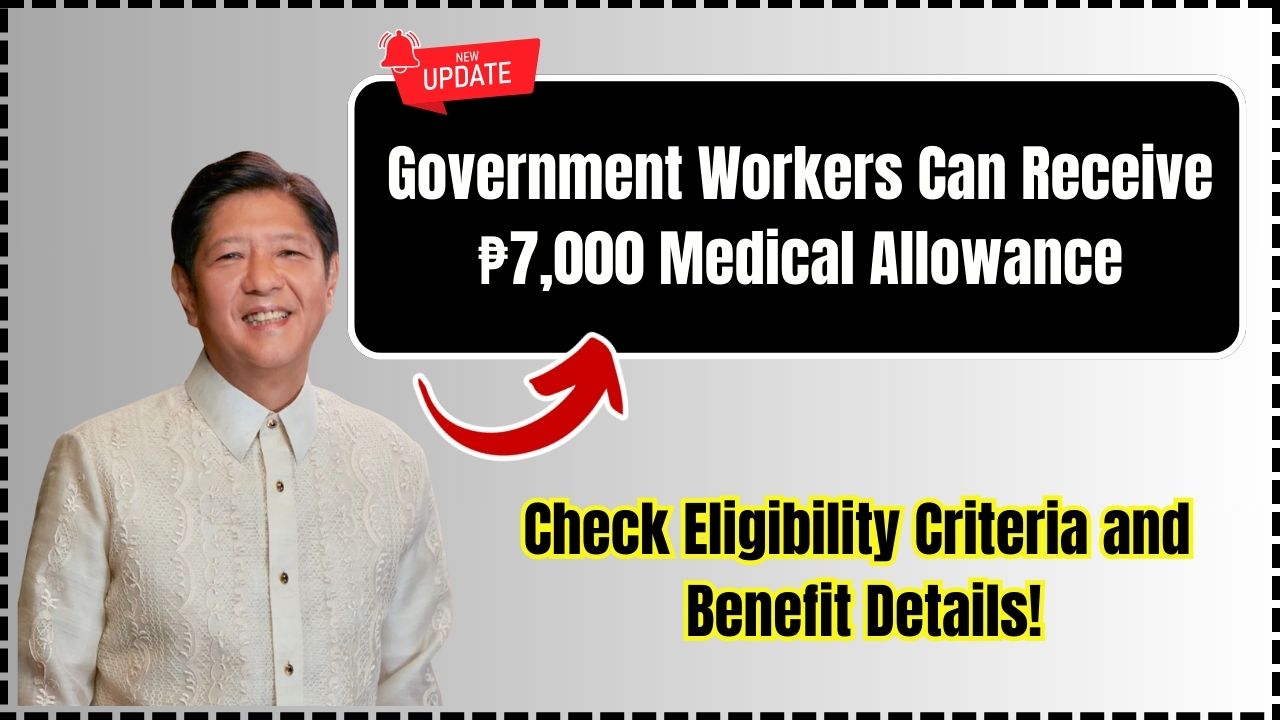Starting January 2025, government employees across the Philippines will receive a significant healthcare benefit under Executive Order No. 64, s. 2024. The national government has officially approved a ₱7,000 annual medical allowance for qualified personnel in a move aimed at enhancing public sector health support and financial resilience.
This is more than a routine policy update — it’s a strategic commitment to the well-being of civil servants who play vital roles in running the country’s institutions. With the rising cost of healthcare, this allowance arrives at a time when it’s needed most.
💡 What Is the ₱7,000 Medical Allowance?
The ₱7,000 medical allowance is a government-funded benefit designed to help civilian personnel in eligible government offices cover medical expenses. It replaces the outdated ₱500 medical examination allowance, offering a far more impactful level of support.
Employees may use this allowance in two ways:
-
Enroll in a Health Maintenance Organization (HMO) through their agency
-
Opt for cash reimbursement of medical expenses if HMO enrollment isn’t practical
The allowance is part of a broader effort by the Department of Budget and Management (DBM) to improve the health and financial stability of public workers.
📌 Key Details at a Glance
| Topic | Details |
|---|---|
| Allowance Amount | ₱7,000 annually |
| Effective Date | January 2025 |
| Eligibility | Civilian employees in NGAs, SUCs, and select GOCCs |
| Usage | HMO enrollment or cash reimbursement |
| Exclusions | Consultants, job order workers, and pakyaw laborers |
| Official Source | DBM Circular 2024-6 |
✅ Who Is Eligible?
To ensure fair and proper distribution, the government has outlined clear eligibility rules.
Eligible Personnel:
-
Employees in National Government Agencies (NGAs)
-
Workers at State Universities and Colleges (SUCs)
-
Government employees in GOCCs not under RA 10149 or EO 150
-
Regular, casual, and contractual staff with direct employer-employee ties
-
Elective or appointive officials, full-time or part-time
Not Eligible:
-
Consultants and advisers without formal employment status
-
Job order and contract-of-service workers
-
Laborers hired on a pakyaw basis (piecework or short-term contracts)
If you’re unsure of your status, speak to your HR department for confirmation.
🏥 Two Options to Use the Medical Allowance
1. HMO-Type Coverage (Recommended)
Agencies may partner with HMOs to offer organized health coverage, especially in urban areas. Through bulk procurement, agencies can secure better benefits for employees, such as:
-
Outpatient consultations (GPs and specialists)
-
Emergency and ambulance services
-
Hospital confinement and diagnostic tests
-
Surgery and prescribed medications
Example: If the Department of Agriculture partners with an HMO like Maxicare or PhilCare, employees will gain access to a nationwide network of hospitals and clinics, reducing out-of-pocket expenses and promoting preventive care.
2. Cash Reimbursement (Alternative Option)
For agencies in remote areas or where HMO deals are not viable, employees may claim cash reimbursements. This ensures equitable access regardless of geography.
Covered expenses:
-
Hospital bills (public or private)
-
Consultations and lab tests
-
Prescriptions and medicines
-
Emergency care
-
Diagnostic imaging and medical devices
Reminder: Keep all receipts, prescriptions, and medical documents for reimbursement claims.
📝 How to Avail the ₱7,000 Benefit
For HMO Enrollment:
-
Wait for an agency announcement.
-
Fill out the HMO application form.
-
Submit required IDs and documents.
-
Attend an HMO orientation (if needed).
-
Receive your HMO ID or login credentials.
-
Start using the benefits at accredited clinics/hospitals.
For Reimbursement:
-
Collect official receipts, medical certificates, and discharge summaries after treatment.
-
Fill out the agency-provided reimbursement form.
-
Attach all supporting documents.
-
Submit to the HR or finance office.
-
Wait for processing (typically 2–4 weeks).
-
Reimbursement will be credited via payroll or finance systems.
Tip: File your claims early, especially before the fiscal year ends, to avoid processing delays.
📢 Why This Allowance Matters
The increase from ₱500 to ₱7,000 reflects the government’s renewed emphasis on public servant welfare. Rising costs of diagnostics, medications, and medical care have made out-of-pocket health spending unsustainable for many.
For government employees, this allowance means:
-
Reduced medical debt
-
Improved access to quality healthcare
-
Better productivity and attendance
-
Enhanced morale and job satisfaction
The DBM confirmed:
“Access to quality healthcare is a fundamental right of every public servant. This allowance helps ensure our workforce remains healthy, productive, and supported.”
👥 Nationwide Impact
As of 2023, over 1.8 million government employees serve in various roles across the Philippines. This benefit not only strengthens their individual well-being, but also supports their families and contributes to improved public service delivery.
Agencies are encouraged to coordinate promptly with HMOs and prepare internal guidelines to ensure smooth implementation starting January 2025.
❓ Frequently Asked Questions (FAQs)
Q1: Can I claim both HMO and cash reimbursement?
A: No. You must choose one method per calendar year. Dual use is not permitted.
Q2: Is the ₱7,000 taxable?
A: No. As long as the allowance is used strictly for medical purposes, it remains non-taxable.
Q3: Will the allowance renew every year?
A: Yes, subject to budget availability and adherence to DBM rules and appropriations.
Q4: What if my expenses exceed ₱7,000?
A: You will need to pay the difference out of pocket, or check if your agency offers supplemental assistance programs.
Q5: Can I use the allowance for my spouse or children?
A: It depends on your agency’s policy. Most cases restrict the benefit to the employee only unless the HMO plan includes dependents.
Q6: How long does it take to get reimbursed?
A: 2 to 4 weeks on average, depending on your agency’s internal processing timeline.
✅ Final Thoughts
The ₱7,000 medical allowance is a welcome and overdue development for Filipino government workers. Whether through HMO coverage or reimbursement, this benefit represents a tangible step toward improving the healthcare safety net for those who serve the nation daily.
With proper implementation and continued government commitment, this program has the potential to uplift the lives of millions of public servants while enhancing the performance of the institutions they support.









